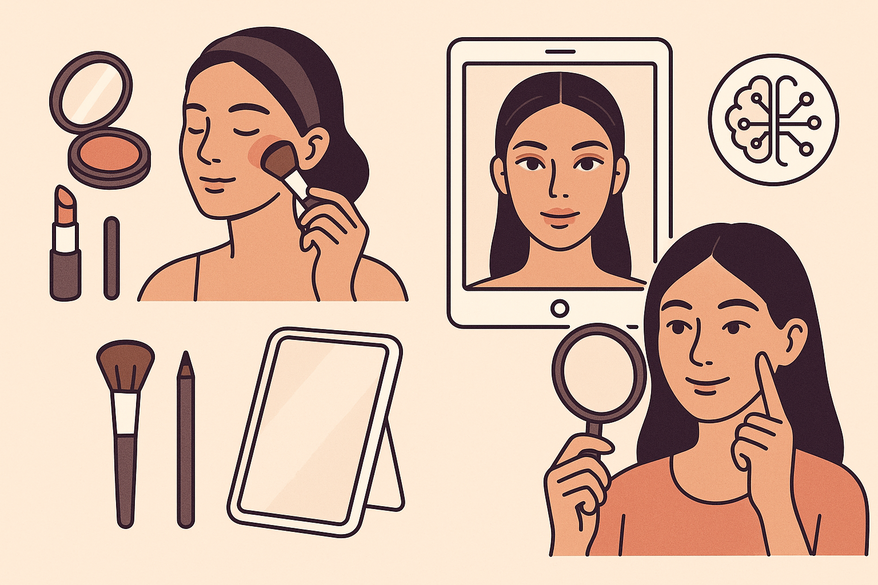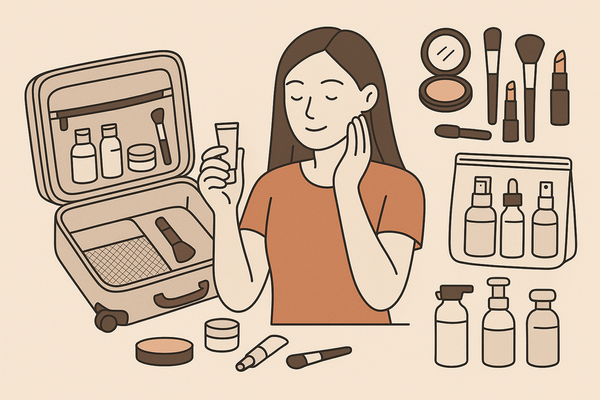Improve Makeup Score Tips: Boost Your Beauty with Traditional Methods and an AI Makeup Generator
Discover improve makeup score tips using traditional methods and an AI makeup generator for personalized beauty enhancement.

Estimated reading time: 8 minutes
Key Takeaways
- Understand makeup score: Standardized metric covering application quality, product safety, and aesthetics.
- Traditional methods: Canvas prep, product selection, application techniques, and tool hygiene.
- AI makeup generator: Personalized shade matching and virtual try-on with Makeup Check AI.
- Step-by-step guide: How to access, input data, review results, and implement suggestions.
- Integration: Blend manual artistry with AI precision for consistent, confident looks.
Table of Contents
- Understanding Makeup Score
- The Key Strategies
- Incorporating Technology with an AI Makeup Generator
- Step-by-Step Guide to Using an AI Makeup Generator
- Combining Traditional Techniques with an AI Makeup Generator
- Conclusion
Understanding Makeup Score
A makeup score is a standardized way to rate your look across three core dimensions:
- Application quality: How smooth and precise your makeup appears.
- Product safety: Assessment of ingredients for health and irritation risks.
- Aesthetic performance: Color match, trend alignment, and overall harmony.
Why it matters:
- Benchmarks your progress over time.
- Enhances transparency in product selection.
- Builds confidence in your beauty routine.
Key factors that influence your makeup score: product ingredient quality & safety (see Yuka evaluation guide), precision of application techniques, quality of tools, suitability for skin tone, and alignment with current beauty trends. For a deeper dive, visit Understanding Makeup Score.
The Key Strategies
Use these practical, easy-to-follow tips to lift your makeup routine and score.
Tip 1 – Prep the Canvas
- Cleanse: Remove dirt and oils.
- Moisturize: Hydrated skin plumps fine lines.
- Why it works: A smooth base makes blending seamless and long-lasting.
Tip 2 – Choose the Right Products
- Look for low-risk, high-performance formulas.
- Avoid hazardous or moderate-risk ingredients (see Yuka evaluation guide).
- Why it works: Safe products minimize irritation and deliver consistent results.
Tip 3 – Master Application Techniques
- Blending: Use small, dabbing motions for seamless transitions.
- Contouring: Sculpt facial structure with light and dark shades.
- Lining: Draw precise eyeliner and lip lines with short, light strokes.
Tip 4 – Match to Your Features
- Warm undertones: Peach and gold shades.
- Cool undertones: Pink and silver shades.
- Adapt face-shaping techniques for wide foreheads or round cheeks.
Tip 5 – Use Quality Tools
- Brushes: foundation, blending, and angled liner brushes.
- Sponges: damp beauty sponge for crease-free coverage.
- Cleaning: wash tools weekly with gentle soap and warm water.
Tip 6 – Avoid Common Mistakes
- Over-application: Less product prevents cakey looks.
- Harsh lines: Soften edges with a clean brush.
- Mismatched tones: Always check in natural light.
- Patch-test new products on your jawline.
Tip 7 – Hygiene Matters
- Clean tools prevent breakouts and keep products pure.
- Method: gentle soap, warm water, and air dry on a clean towel.
Conclusion of tips: Photograph your final look, get feedback from friends, or use an AI makeup generator for objective scoring.
Incorporating Technology with an AI Makeup Generator
If you're looking for instant, personalized recommendations, Makeup Check AI delivers data-driven makeup suggestions based on your facial features and preferences. Its lightweight AI makeup generator integrates seamlessly into your routine without overwhelming you with options.
An AI makeup generator uses facial recognition and machine learning to provide tailored makeup suggestions:
- Facial analysis for tone and texture.
- Data-driven product and shade recommendations.
- Visual overlays showing application zones.
- Virtual try-on before you start.
Experiment with virtual try-on solutions like Real-Time Makeup Try-On for live previews.
Step-by-Step Guide to Using an AI Makeup Generator
Want a quick demo? Watch how it works:
Step 1: Access the Tool
- Platforms: BeautyPro AI, GlamourGenie, FaceArt Lab.
- Choose free or paid based on features.
Step 2: Input Data
- Upload a clear, high-resolution face photo.
- Enter age, skin concerns, and event type.
- Tip: Use indirect lighting and a neutral background.
Step 3: Select Preferences
- Style: natural, glam, or editorial.
- Product categories: foundation, eyeshadow, blush.
- Coverage level: sheer, medium, or full.
Step 4: Review Results
- Recommended shades and brands.
- Step-by-step application order.
- Visual mock-up with digital makeup.
Step 5: Implement Suggestions
- Follow AI tips in your routine.
- Blend and refine with manual techniques.
- Cross-check in real lighting and observe skin reaction.
Combining Traditional Techniques with an AI Makeup Generator
Blending both approaches gives you the best of art and science:
Traditional Advice vs. AI Insights
- Manual blending with your brush vs. data-driven color analysis.
- Freehand contour placement vs. precision overlay guides.
- Trial-and-error shade testing vs. instant feedback and matched shades.
Practical integration tips:
- Start with an AI-suggested shade, then adjust by eye for your lighting.
- Apply contour as AI shows, then blend with your go-to brush.
- Track your makeup score in a journal; note manual and AI-driven changes.
Conclusion
Combining traditional makeup tips with an AI makeup generator helps you achieve safe, precise, and personalized results. You’ll gain better product choices, smoother application, and more confidence in your look.
Experiment with these methods, share your progress, and try our recommended AI tool today. Bookmark these tips and subscribe for more beauty guides.
FAQ
What is a makeup score?
A makeup score is a numerical rating that evaluates your application technique, product safety, and aesthetic performance to help you improve over time.
How safe are AI makeup generators?
AI generators analyze only the image data you provide and suggest products based on algorithms; they do not store sensitive information. Always patch-test new products.
Can AI replace traditional makeup application?
AI offers precise color matching and virtual try-on, but manual skills—like blending and contouring—still play a crucial role in achieving a flawless look.
How often should I review my makeup score?
Review your score whenever you introduce new products or techniques—ideally every 2–4 weeks—to track progress and make adjustments.
Are AI recommendations accurate for all skin types?
Most AI tools perform well across a range of skin tones and textures, but lighting conditions and photo quality can affect accuracy. Always cross-check in person.




